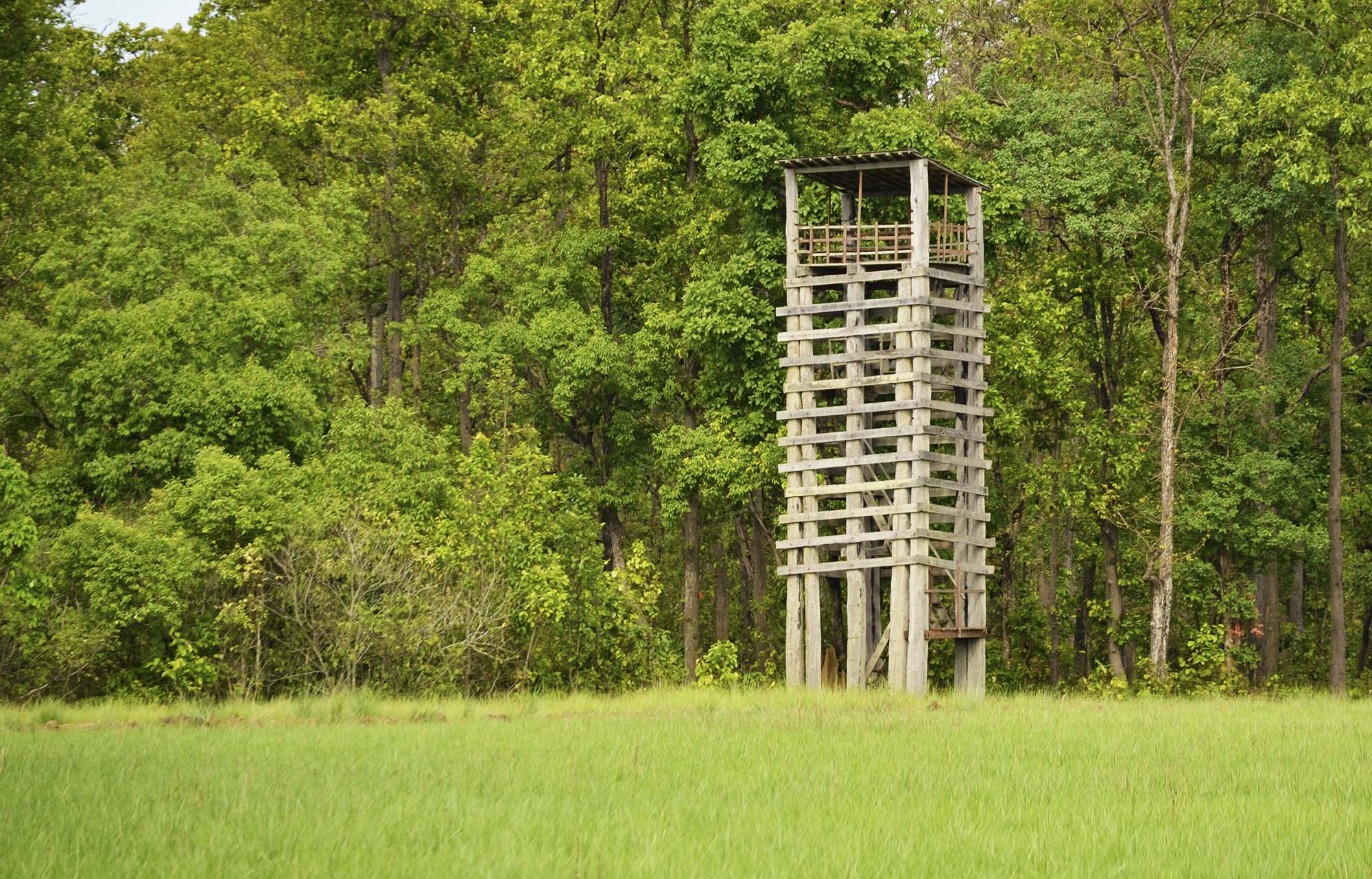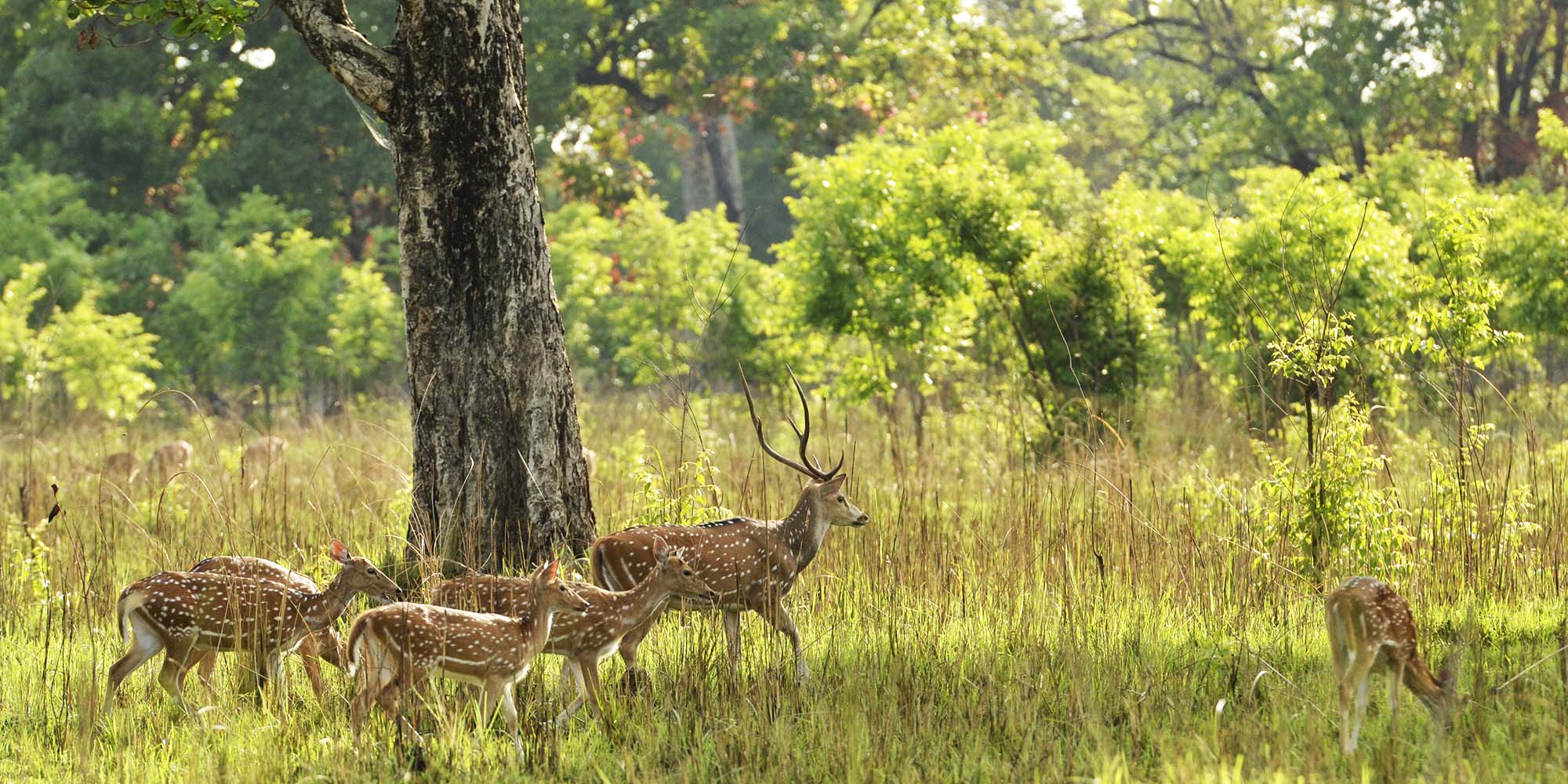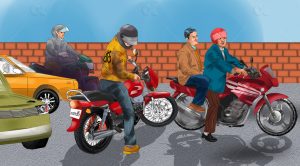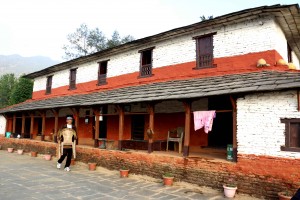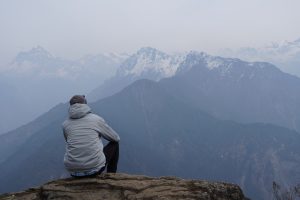The bus stopped in complete darkness. The only light was the tiny bulb in the sentry’s post; it was hard to tell if the soldier was awake or snoozing. My companion and I got off and the bus moved away, its roar and taillights getting fainter and fainter until it drowned in the dense darkness.
We could only feel the asphalt road under our feet. There were no people around, no noise, only the outlines of huge sal trees towering all around us.
My companion and I shuffled toward a faint light coming from a hut. A woman was busy feeding splinters of wood to an adobe hearth, coaxing the dozing fire to rise. We ordered tea. Dawn was still an hour away. The only sight available was the feeble fire with our tea brewing over it, the woman the only other person awake in the small settlement. This thin presence of people and sounds associated with human habitation seemed apt, for we were on the edge of Bardia National Park, the largest protected area in Nepal’s lowlands.
After paying the bewilderingly low sum of Rs 20 for four cups of tea, we set off for Thakurdwara, a Tharu village into which lodges and resorts had been grafted. No transportation was available at that hour. The resort we were going to stay in had informed us that their only vehicle had broken down. I decided to walk the twelve kilometers to Thakurdwara, assuming the exertion would be offset by the bucolic setting we would pass through.
The sun struggled to get through the blanket of winter haze spread over the land. In over three hours of walking the only form of transportation we saw was a bullock cart. But it was going in the opposite direction. Our huge backpacks and trekkers’ clothes drew long stares from children and adults and buffaloes. Then the last of the Tharu houses disappeared, and with it the sweet ‘namaste’ that children lavished on us from doorways and courtyards, and we entered a small forest.
The dirt road wove through a sal colonnade. We were hemmed in by the dense undergrowth on either side. As we walked we heard the rushing of feet, some light, some heavy, on the crunchy forest floor. I began to feel out of place—a feeling I’ve come to take as the parameter for a wilderness.

Feeling out of place is charming in a place like Thakurdwara. The wildlife makes sure you never feel at home. I was brushing my teeth before bed when a squealing and thrashing in the bougainvillea bush outside my window startled me. I shone my headlamp into the bush and found a civet with a mouse dangling from its mouth. I turned off the light, returned to bed, and spend the next half an hour listening to the crunching of bones.
Enough spills over from the wilderness on to your doorsteps, windows and gardens in Thakurdwara, from the early morning calls of jungle fowl to the iridescent purple sunbird flitting among the flowers. But that only whets the appetite; the real feast is inside the national park. We decided to try our luck too and went on a jungle walk, with the high hopes of seeing the big beasts—tiger, rhino, elephant.

Enough spills over from the wilderness on to your doorsteps, windows and gardens in Thakurdwara, from the early morning calls of jungle fowl to the iridescent purple sunbird flitting among the flowers.
A walk through Bardia’s jungle in the early morning was like moving through a neighborhood of musicians tuning their instruments. Birds chirped as they warmed themselves on the tips of elephant grass. Dew fell on brittle leaves, the sound intensified in the morning quiet. Kingfishers dove into rivers, emerging with breakfast. Eagles screeched and ducks let off sonorous cries. To our silence-deprived ears the jungle was a silent place, but it was actually a symphony of dozens of blended sounds, the soundtrack of an ecosystem.
We spent half an hour up in a machan, or wooden tower, a couple of hours in a hideout on a river bank, and some hours walking from one spot famous for wildlife sightings to another. But the tiger eluded us, elephants remained hidden somewhere, and rhinos were not in the mood for saying hello.
Our day in the jungle ended without a glimpse of these animals. But we spent enough time waiting for these beasts to sink one level deeper into the wilderness, to understand that the beauty of a wilderness lies in the forgotten links it revives—whether through a tiger sighting or the sound of a kingfisher diving in.
Checklist
Getting to the Wild

A road trip, on private or public transportation, is a rewarding way to get to Bardia National Park. If you travel by road, you will be on the East-West Highway, passing through a countryside largely unspoiled by development. Take any of the several daily buses that depart for Dhangadhi or Mahendranagar from the New Bus Park in Kathmandu.
For swifter escapes from the concrete jungle to Bardia’s jungles take the daily flight to Nepalgunj. From there Thakurdwara is 87 km. Resorts are happy to send vehicles to fetch you for an extra fee. Other options include taking local buses to Ambassa from Nepalgunj. Getting from Ambassa to Thakurdwara (12 km) is tricky as local transportation is not very reliable. Be prepared to wait there a while if you haven’t made arrangements for a ride.
While you are there

In Bardia, you are not only close to a wilderness but amidst a fascinating ethnic group, the Tharus. Their culture is sustainable living taken to the level of art. Every home is a lesson in minimalist living, with houses and articles of daily use made from jungle resources. Saunter through the villages and ask for permission to enter these lovely houses. The Tharu Cultural Museum at the national park entrance gate also showcases the indigenous culture.
The crocodile breeding center, located near the park’s main entrance, offers the chance to watch predators like mugger crocodiles and gharials from mere inches away.
Combine your trip to the wild with a religious side trip by visiting the Thakur Baba Temple.
If you are not pressed for time, the Blackbuck Conservation Area is certainly worth visiting. Besides being the last remaining wild herd of blackbuck in Nepal, it is also the northernmost distribution of the species in the world.
Places to Stay

Every third building or so in Thakurdwara is a lodge or a resort. Bardia Adventure Resort has separate cottages and Tharu-style huts sequestered in a mini jungle. It has open fields on one side, a haunt of cranes and jungle fowl. The Mango Tree Lodge is a celebration of traditional Tharu architecture, with rooms furnished to reflect the simple beauty of the indigenous culture. Several Tharu households have homestay facilities, although they are located a little further from the national park’s main entrance.
***
Also read
Khaptad: A banquet for the senses



